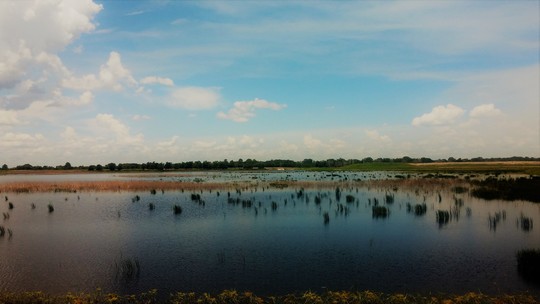FOR IMMEDIATE RELEASE: Nov. 17, 2017
DEP Invests More Than $90 Million in
Water Quality Improvement Projects
~Recently completed projects benefit Central Florida waterbodies,
St. Lucie estuary and Everglades~
 TALLAHASSEE, Fla. – The Florida Department
of Environmental Protection has provided more than $90 million toward the recent completion of seven water quality improvement projects in Central and South
Florida. The funding was awarded through
DEP’s Division of Water Restoration Assistance's various funding resources and
programs.
"We are pleased to partner with water management districts, cities and local municipalities to fund infrastructure needs," said Drew Bartlett, DEP deputy secretary for ecosystems restoration. "Projects ranging from septic to sewer conversions and aging pipe replacement to shoreline stabilization and nutrient reduction are vital to helping Florida's springs, rivers and waterways meet water quality goals."
The recently completed projects include:
Apopka: The Orange Blossom KOA septic to sewer project, funded in part by a $34,425 Florida Springs Grant to the St. Johns River Water Management District, connected the park to Apopka's existing central sewer system, improving water quality in Lake Apopka and the Wekiva springshed.
Gasparilla Island: The Gasparilla Island reverse osmosis water treatment plant expansion project, funded in part by a $5 million Drinking Water State Revolving Fund (DWSRF) loan, expanded the capacity of the existing facility from 1.073 to 1.267 million gallons per day. Also included are two new brackish
water supply wells and a raw water main to transport water from the new wells to
the facility, which supplies potable water to its service area on Gasparilla Island in
Lee County.
Largo: The Largo Wet Weather project, funded in part by a $73.2 million Clean Water State Revolving Fund (CWSRF) loan, upgraded and expanded the city's sewer and reuse systems. These much-needed improvements have helped reduce sewer overflows and ensure that treated wastewater effluent meets water quality standards.
Martin and St. Lucie counties: The Caulkins Water Farm project was funded in part by a total of $1.5 million in Environmental Protection Agency's Section 319 nonpoint source pollution grants to the South Florida Water Management District for the original pilot project, which turned former citrus groves into a reservoir. With the pilot project's success, the reservoir was recently expanded, providing much need storage for excess stormwater from the C-44 Canal, which is linked to Lake Okeechobee. The completed project provides both water storage and a reduction in nutrient loading into the St. Lucie River and estuary.
Sebring: The Spring Lake Improvement District's Stormwater Treatment Area project, funded in part by a total of $4.3 million in a CWSRF loan, an Environmental Protection Agency's Section 319 nonpoint source pollution grant and a legislative appropriation, constructed a lake-wetland marsh system and expanded storage capacity for stormwater treatment. The stormwater treatment area provides additional water quality treatment benefits prior to discharge into Arbuckle
Creek, a tributary of Lake Istokpoga. This water is then transported to Lake Okeechobee and ultimately, the Everglades and Florida's sensitive Atlantic
estuaries.
Stuart: The distribution system and water meter upgrade project, funded in part by a $5.8 million DWSRF loan, replaced more than 11 miles of distribution piping, converted approximately 2,500 meters and installed an emergency interconnect with the Martin County water supply system. This will improve reliability of water supply to Stuart residents.
Also in Stuart, the East Heart of Haney Creek wetlands restoration project, funded in part by $181,000 in Total Maximum Daily Load (TMDL) Water Quality Restoration grants, re-graded approximately 6 acres of an exotic-cleared area, created berms and weirs, and restored the eastern third of Heart of Haney Creek to native wetlands. Waters from the 395-acre Eastern Haney Creek watershed will now be directed through the restored wetlands before discharge to tidal Haney Creek, and ultimately the St. Lucie estuary.
For more information about the State Revolving Fund, Nonpoint Source water quality restoration grants, Florida Springs Grant Program and other funding opportunities, please visit the Division of Water Restoration Assistance.
|